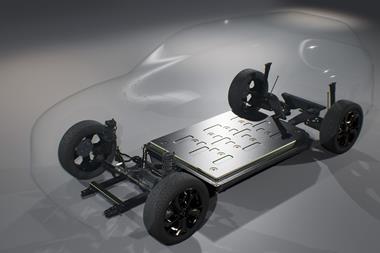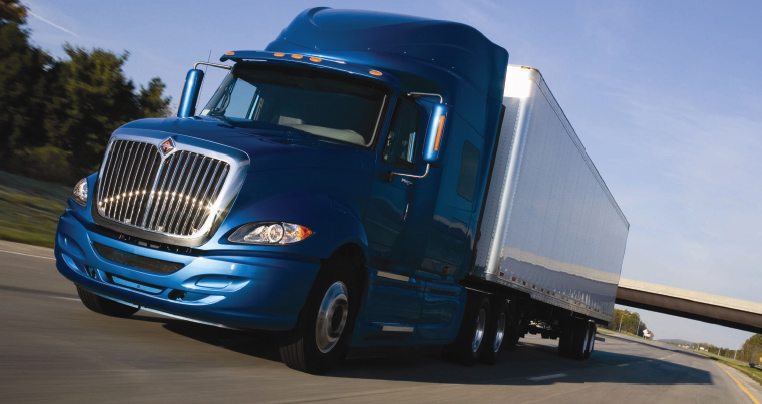
In the face of emissions regulations, global competition and new materials, truckmaker Navistar is putting new manufacturing processes into effect. AMS talks to Vice President of Manufacturing Tom Horn about them
Tom Horn is the man responsible for the company’s five American engine plants and two foundries. Given the geographic spread of the plants, I asked him how closely the processes are matched. He admitted that at present there were some differences, but that it was a situation that he had under watch.
“I think that we are finding that, at the end of the day, when you look at benchmarking and best practices, there is typically one best practice,” Horn says. “From a historical perspective if you will, in North America, our labour costs tend to be higher than the rest of the world. We have gone through a period where we have maybe tried to mechanise or automate our way out of some of the labour content. In Brazil on the other hand, where they have lower labour costs, they have tended to stay in more labour-intensive operations. But at the end of the day, as far as making a quality product, there is one best way to do it and you probably should build it that way whether in North America, South America, Africa, the Middle East, China; you should follow those processes that assure the most repeatability and highest quality.”
On the face of it, that sounds like a call to increase automation in South America, but Horn says it could include compromise. “I think that as we contemplate our next round of capital equipment in North America, we will look for opportunities to use more labour, and I also think that some of the technology that we have put in place in North America will be incorporated around the world because the quality return is fantastic.”
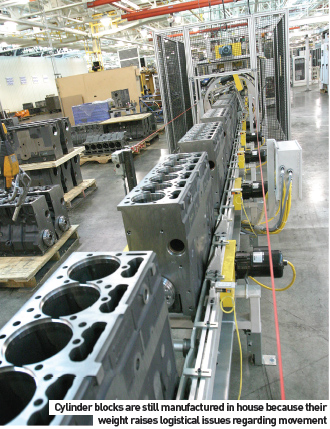 Vertical foundries
Vertical foundries
The process through the engine plant follows a traditional route. “We have two grey iron foundries,” Horn explains. “One is a block and head foundry, and the other is a miscellaneous parts foundry, doing smaller parts, typically in the under-10 to 60lb (4.5-27 kg) range. These are both foundries that we have had since the 1930s that are very vertically integrated.
“In our truck business, for instance, brackets and spray hangers and odd things of that nature come out of the smaller foundry. Then our powertrain of blocks and heads came out of the other foundry.” For the greater extent, Horn’s five plants follow the entire process through machining to final assembly, although there are a few exceptions, such as the plant in Indianapolis that does all the crankshafts, camshafts and connecting rods for the Alabama plant.
Leaving the transfer line
The manufacturing choices for truck engine makers are much the same as those available in the car industry: to retain the traditional transfer lines that are productive for high-run, single-ticket items or to look towards the flexibility of machining centres. “You know we are in the middle of evolving away from transfer lines,” Horn explains. “Our business model in the past has been really high volume and I think that the transfer lines were the right answer at that point. I think also historically, the product lifecycle was significantly longer. I mean, literally, to have ten or 20-year lifecycles on a product was not uncommon. Now we are lucky to get three or four years out of a product. You really need to have the CNC type of technology so that you can adapt to the changes going forward.
“As well as this, we are interested in growing our company, and that requires us to compete. So to have the most flexibility going forward, I see all the capital equipment that we buy in the future being cell-based CNC type of equipment. “We don’t want buffer stops between operations. When you look at the process floor mapping and the tenets of lean manufacturing, that inventory is the devil, bad stuff. It costs you money, it’s hard to control, it’s much better to do a onepiece flow and, if you are going to carry safety stock, carry a finished part, not a work in progress.”
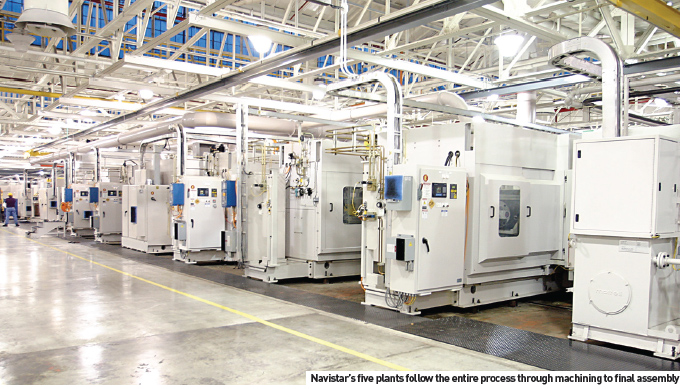
Distinguishing features
Like most manufacturers, Horn faces the dilemma of what manufacturing to keep in house and what to outsource, a decision that is more difficult these days. “I have been with the company since 1985. Then we used to believe that the five Cs – cylinder head, crank case, connecting rod, camshaft and crankshaft – were things that you could distinguish your product with,” he said. “That was probably true when engines were still mechanical or hydraulic, but as we have evolved to the tighter emission standards, what we have understood is that fuel management and air management have a whole lot more to do with the success of your product than the five Cs do. “Furthermore, I think the barest entry used to be somewhat high on some of those components. Now, however, I would consider connecting rods and camshafts absolute commodities. There are millions of people making them all over the world – quality parts at that. There are a lot of options, so you have to do a make-versus-buyer every time. I think that cylinder heads are in that category. I even think that the blocks would be in that category if they just didn’t weigh so much and we didn’t have logistical concerns about moving them aro The crankshaft though, in my experienc is still a complex part that we can make significantly cheaper than the market wants us to pay for them. But then going forward, I think that if we are going to stay in machining at all, its going to be in the higher, complex fuel system and air management parts, not in the traditional five Cs.”
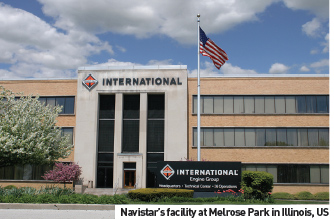 Commonality and change
Commonality and change
There is a drive at Navistar to increase commonality among parts, something that begins early in the project development cycle. “We think it offers us quality benefits and economies of scale in producing or purchasing parts,” Horn explains. “So we always start with that goal and we have varying degrees of success based on the application.”
As for the challenge of change, Horn picks two burning issues: materials and lifecycles. “I see a wave of exotic materials coming our way as designers try to reduce the weight of the engine,” he admits. “We don’t have that now. Because of the firing pressures and cylinder pressures, we are still dealing with grey iron parts in the blocks and heads, and steel parts for the cams, cranks and rods. I can see in the future where we will use more exotic materials and that that we are going to have to develop a lot a metal removal expertise.
“Right now I think that the biggest thing is cost optimisation. When we used to have a ten-year product lifecycle, you could start a programme and maybe not optimise the cost. You could do tool trials over time and get your costs down, get things tuned in and just have a more repeatable process and kind of work the waste out of the system. But now that the lifecycle is three or four years long, you have got to be right the first time. “You really have to do a lot more work in your process design. Process design and set up is more important and more valuable than it’s ever been, because you just don’t have time to debug later.”
Environmental challenge
Part of the material challenge down to the environmental pressures being put on the industry. “I think that there is certainly a lot of interest in the marketplace to find solutions that are more environmentally friendly and offer a better fuel economy,” Horn continues. “I think that the industry is still pretty immature in trying to figure out how to achieve those goals and so it is very easy to get splintered in a lot of different directions. I mean you could do bio, diesels, hybrid electric, compressed natural gas; there are just so many ways that people are trying to develop powertrains that are going to operate more efficiently. “We keep people assigned to all of those and I wouldn’t say that we are necessarily taking a market follower position; that would be unfair. However, by the same token you can’t develop every possible scenario that is out there right now. We are trying to work primarily on our fuel system, our air management and our electronic controls to maximise the performance of the engine. We also continue to develop alternate fuel or power systems that you have probably read about.”
Quality assurance stations
Horn is particularly proud about the in-line quality control that Navistar has adopted. “I think that the direction we have taken in the last three years is significant and I think in the industry there is still a lot of resistance to doing what we call integrated quality insurance or cold testing an engine,” he adds. “A number of our competitors and customers still think the best way to ensure a quality engine is to build it up entirely and then run it through a test cycle. We have found that it’s incredibly wasteful to sit there and, if you will, oversimplify it – make a mistake in the second or third process of building an engine – and then wait until the 40th, when it is done, to find out your mistake; it is really expensive.
“So we’ve developed integrated quality assurance stations where we physically turn the crankshaft and move the pistons up and down and try to test the functionality of the engine as we assemble it. For instance, it is not uncommon for one of our lines to have as many as 17 of these quality stations during the process, where we are turning the cranks and generating characteristics to ensure the integrity of the assembly as we go. Then, if there is a problem, you can address it immediately and cut off the flow and not have rework or make repairs. By the time the engine gets to the end of the line it’s an absolutely firsttime- good engine. “We still start the engines at the end of the line to make sure all the cisterns are primed before it goes to the vehicle plant, that it starts the first time when they turn that key. But anything you can find in a hot test, we can find in a cold test as we are building the engines. It’s a great process that I think more and more people will turn to.
Competitive culture
However much you automate an engine plant, people still form an important element and Horn is candid enough to admit that Navistar have had varying levels of success at its various plants. “We have union and non-union facilities, so every plant has its own unique culture. At every plant, every employee has the ability to stop the line and correct something if it is wrong, or call attention to something if it is wrong.
“Every one of our plants has team meetings where we have different methods of listening input and suggestions from employees on a regular basis. So we are looking for improvement, because you know that impacts their job security. The more cost-effective they can be, the more competitive they are, and obviously the more job security they have.”
Another valuable tool on the road to increased productivity is benchmarking, something that Horn says they do wherever people will let them. “We have a group of approximately 50 engineers that we call our Advance Manufacturing Engineering Group (AME). Its task is to keep common processes, tools and equipment between our five facilities, as well as travelling the world, trying to find the greatest and latest technology and figure out what other people are doing.”
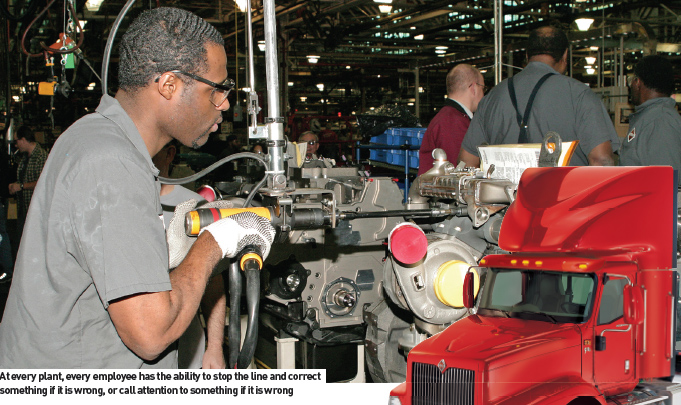
Apart from trying to involve workers in any improvement strategy, Navistar organises them into crossfunctional working teams, an initiative now common among vehicle makers. “There is one thing that I think is important going forward – the traditional business model in our industry was to be very functionally driven,” explains Horn. “The manufacturing people just build stuff in their factories, the purchasing people just buy stuff and send it in to the factories, the design engineers design it to meet the spec and purchasing will find a way to buy it. “We have taken great strides in the last couple of years to go to a more cross-functional approach and recognise that the manufacturing expertise that we have at our plants can be shared with our supply base and can impact on their cost. It can make a purchasing agent a lot more effective to have manufacturing experience. So they form a commodity team, which involves supplier quality engineers, manufacturing engineers, buyers and design engineers, all working together to maximise the process and the cost to the products that we are buying.
“It’s not good enough now for a design engineer just to design a part that meets the engine attribute. They have got to design a part that will make it easier for me to assemble it or machine it. They have to work together rather than just throw a design over the wall and say figure it out how to do it. I think that the traditional approach is dead. It really takes every expertise from cradle to grave to maximise the value of your product.

































